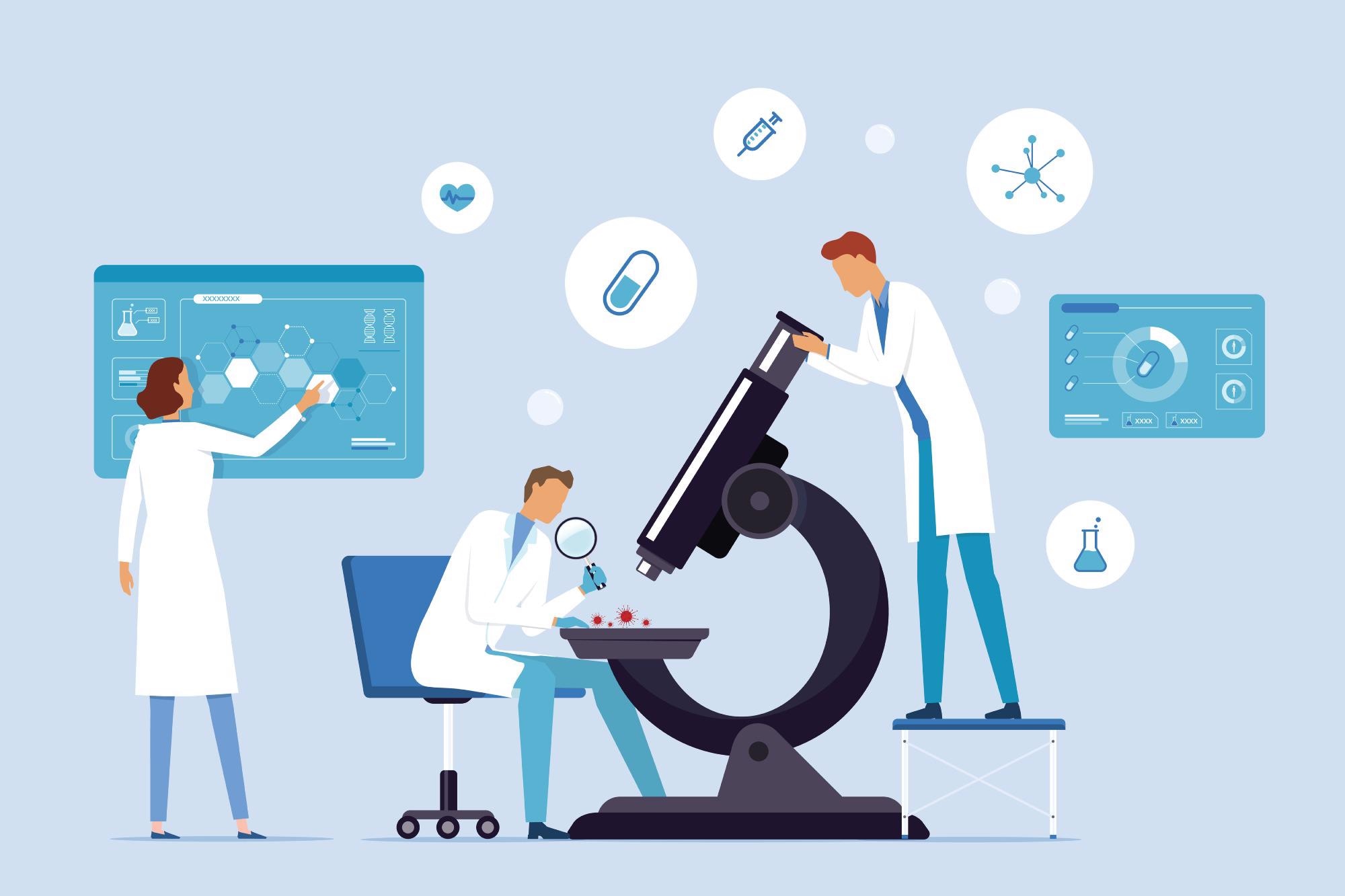 By Surbhi JainReviewed by Susha Cheriyedath, M.Sc.Mar 7 2022
By Surbhi JainReviewed by Susha Cheriyedath, M.Sc.Mar 7 2022In an article recently published in the journal Additive Manufacturing, researchers discussed the development of tree-like 3D printed scaffolds as well as their utility for innervated bone regeneration.

Study: 3D Printing of Tree-like Scaffolds for Innervated Bone Regeneration. Image Credit: Graphic farm/Shutterstock.com
Background
Haversian canals and Volkmann canals in bone tissue have a complex structure with nerves. Bone feeds intrabony neurons with mechanical, chemical, and electrical cues to keep their physiological processes on track. As a result, for functional bone regeneration, particularly innervated bone regeneration, it is critical to repair both bone and intrabony nerves at the same time.
However, no innervated bone regeneration employing tissue engineering biomaterials or scaffolds has been reported to date. Tissue engineering scaffolds with unique microstructures have been extensively used in inducing nerve and bone regeneration in the last few decades. It is also observed that morphological evolution in both plants and animals has been quite flexible.
Furthermore, proper phyllotaxis distribution aids plants in capturing more light, water, and nutrients, allowing them to better adapt to their surroundings. As a result, the variety of phyllotaxis, such as varied blade intervals and divergence degrees, provides useful scaffold design alternatives. The tree's open architecture facilitates the development of scaffolds that promote cell penetration and transport while also allowing for tissue integration.
About the Study
In the present study, the authors devised a tree-like bioceramic (TLB) scaffold and presented its utility as an integrated three-dimensional platform for multicellular delivery and various tissue interactions inspired by plant phyllotaxis. The scaffolds' leaf blades facilitated the proliferation, adhesion, neurogenic, and osteogenic differentiation of mesenchymal stem cells in a coculture system with Schwann cells (SCs). The leaf blades’ gradient surface structure for the neurogenic differentiation and proliferation of the coculture system was investigated in a thickness-dependent manner.
Additionally, the potential of tree-like scaffolds cocultured with mesenchymal stem cells and Schwann cells towards in vivo bone and nerve regeneration was demonstrated. This study reported innervated bone regeneration using a bioceramic scaffold. A bioinspired TLB scaffold was created for delivering nerve-resident and bone-resident cells to achieve simultaneous nerve and bone regeneration. Using programming design, a tree with varied blade intervals and divergence angles was developed as well as controlled.
Indirect cocultured bone marrow-based mesenchymal stem cells (BMSCs) and SCs were introduced on scaffolds to promote osteogenic and neurogenic differentiation, which was controlled by adjusting the leaf blades' gradient surface structure. This study reported the development of a promising biomimetic method for the regeneration of innervated bone. Multiple nerve-resident and bone-resident cells were systematically integrated into TLB scaffolds to promote bone-nerve interaction, and finally, simultaneous bone-nerve regeneration was achieved.
More from AZoM: Novel Catalyst for Clean Hydrogen Production from Water
Observations
It was observed in the micro-computed tomography (CT) and optical imaging that the number of leaves reduced as the blade intervals increased. In the 0.5 mm group, 12 layers of leaves were found, and in the 1.4 mm group, only 5 layers of leaves were found. In the 0.8 mm group, the surface area to volume ratio corresponding to the scaffold models was the highest. In the 0° group, the leaves were repeated regularly in the vertical direction at every layer, however, in the 20° group, there was no regularly repeated pattern in the vertical direction. On day 1, the monocultured and cocultured rBMSCs and rSCs were attached to the leaves and had uniform distribution on the surface of the leaves. At 7 days, they had spread over the whole leaf.
It was also observed that at 7 days, the coculture group had considerably increased bone morphogenetic protein 2 (BMP2) and osteopontin (OPN) gene expression as compared to the monoculture groups. At 7 and 14 days, the proliferation of the rBMSC-rSC coculture system was considerably higher in the 100 μm group than in the 25 m and 50 m groups.
Furthermore, the surface of the defect in the coculture group was filled with newly produced bone, whereas the surface of the lesion in the blank and tricalcium phosphate (TCP) groups was filled with holes. The immunofluorescence images revealed that the coculture group had many axons in the defect location, but the blank and TCP groups had only a few.
Conclusions
In conclusion, this study elucidated a method for creating biomimetic materials with a hierarchical structure and several functionalities for innervated bone tissue engineering. The authors demonstrated that the tree-like scaffolds with BMSC-SC coculture enhanced nerve formation and bone regeneration in vivo, suggesting that the TLB scaffolds offered a congruent spatial milieu for multicellular crosstalk and further innervated bone regeneration.
The flexible structural design, which combines spatial architecture and gradient surface structure, gives key insights on systematically delivering bone-resident and nerve-resident cells and modulating their activities. The authors believe that building a biomimetic structuralized scaffolds-based coculture system will be an effective way to learn more about the intrinsic interactions between bone and other tissues.
Overall, this study suggested a biomimetic technique for transplanting tree structures into tissue engineering scaffolds, which demonstrated great structural variety and adaptability.
Disclaimer: The views expressed here are those of the author expressed in their private capacity and do not necessarily represent the views of AZoM.com Limited T/A AZoNetwork the owner and operator of this website. This disclaimer forms part of the Terms and conditions of use of this website.
Source:
Zhang, M., Qin, C., Wang, Y., et al. 3D Printing of Tree-like Scaffolds for Innervated Bone Regeneration. Additive Manufacturing 102721 (2022). https://www.sciencedirect.com/science/article/abs/pii/S2214860422001257?via%3Dihub